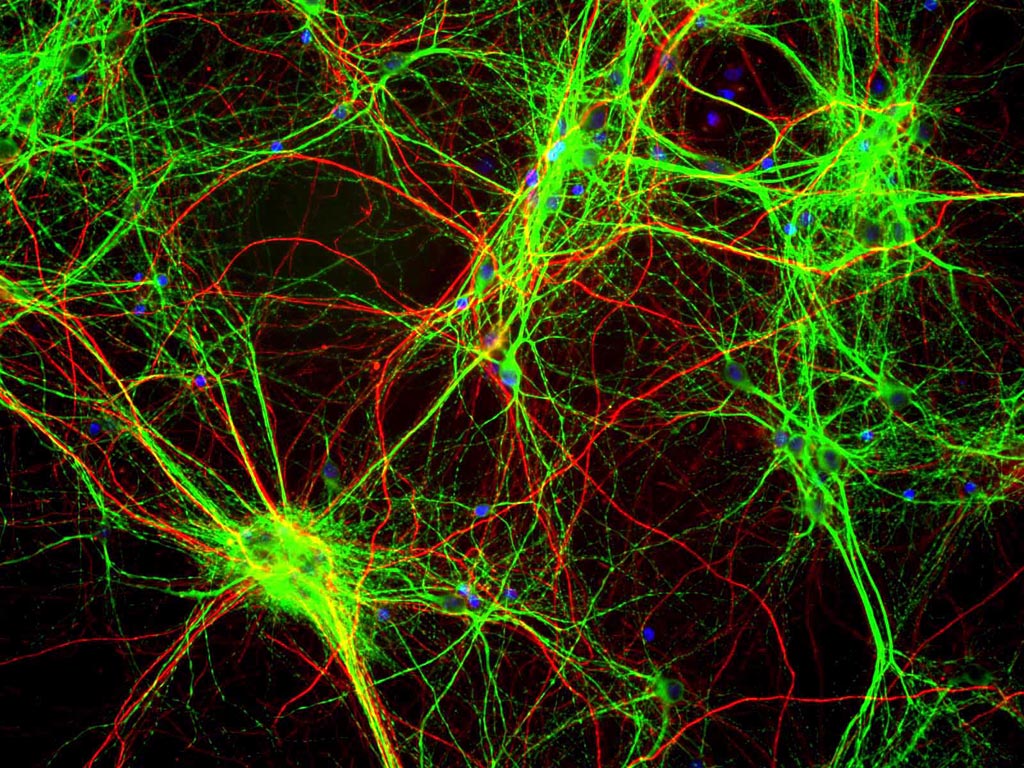Neurofilament Light Considered as NIV Biomarker for Alzheimer's Disease
By LabMedica International staff writers
Posted on 06 May 2019
Results presented in a recently published paper suggested that plasma neurofilament light protein may serve as a noninvasive biomarker to monitor neurodegeneration in Alzheimer disease (AD).Posted on 06 May 2019
Neurofilament light polypeptide (NfL), also known as neurofilament light chain, is a neurofilament protein that in humans is encoded by the NEFL gene. Neurofilament light chain is a biomarker that can be measured with immunoassays in cerebrospinal fluid and plasma and reflects axonal damage in a wide variety of neurological disorders. It is a useful marker for disease monitoring in amyotrophic lateral sclerosis, multiple sclerosis, Alzheimer's disease, and more recently Huntington's disease.

Image: Neurofilaments (red) in cultured rat brain cells (Photo courtesy of Wikimedia Commons).
An international team of investigators examined whether longitudinal plasma NfL levels were associated with other hallmarks of AD such as amyloid plaques and tau phosphorylation. To accomplish this task, they used data from 1583 individuals in the multicenter Alzheimer’s Disease Neuroimaging Initiative study had been conducted from September 2005 through June 2016. Patients were eligible for inclusion if they had NfL measurements. Annual plasma NfL samples were collected for up to 11 years and were analyzed in 2018.
Results revealed that of the included 1583 participants, 716 (45.2%) were women, and the mean age was 73 years; 401 had cognitive impairment, 855 had mild cognitive impairment, and 327 had AD dementia. The NfL level was increased at baseline in patients with mild cognitive impairment and AD dementia and increased in all diagnostic groups, with the greatest increase in patients with AD dementia.
The findings suggested that plasma NfL could be used as a noninvasive biomarker associated with neurodegeneration in patients with AD and could be useful to monitor effects in trials of disease-modifying drugs.
The study was published in the April 22, 2019, online addition of the journal JAMA Neurology.









 assay.jpg)




